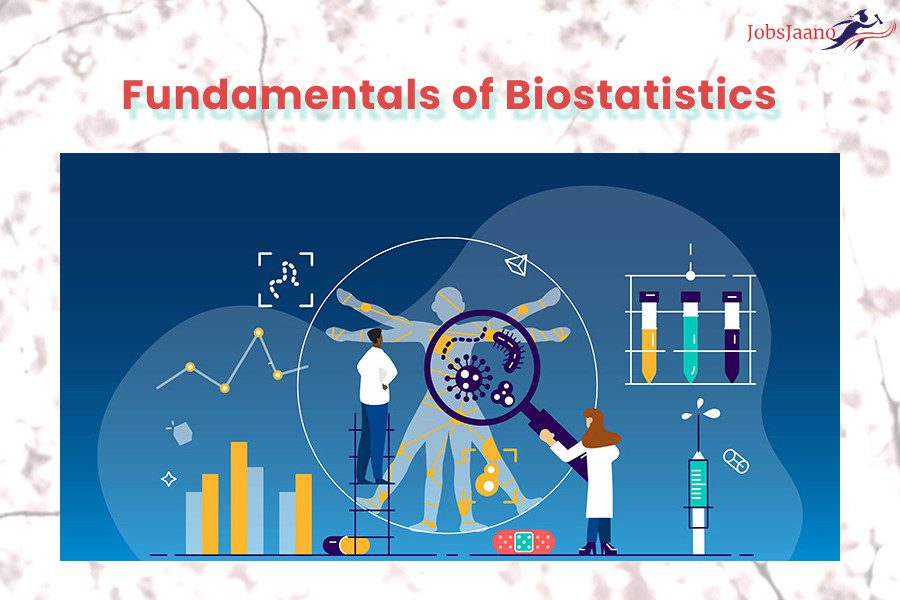Multiple choice Questions of Botany Topic Biostatistics pdf and Fundamentals of Biostatistics Solutions Manual MCQs ( Biostatistics pdf and Fundamentals of Biostatistics Solutions Manual Quiz ) for NEET, GATE, AIAPGET, NEET MDS, NEET PG, DNB PDCET, AIIMS SS, PGIMER (Other), AIIMS PG and many more competitive examinations.
Biostatistics Questions Bank with Answers pdf | Biostatistics pdf | Fundamentals of Biostatistics Solutions Manual
1. Why the data is classified?
(a) To discriminate is similar and dissimilar data
(b) For amusement
(c) Both (a) and (b)
(d) None of the above
Ans. a
2. Which of the following measures the central tendency?
(a) Mean
(b) Median
(c) Mode
(d) All of these
Ans. d
3. Which of the following is not a part of central tendency?
(a) Mean
(b) Median
(c) Integration
(d) None of these
Ans. c
4. Frequency distribution was
(a) grouping the data
(b) class size
(c) upper and lower limit
(d) All of these
Ans. d
5. The sum of the values of all the observation divided b total number of observation is
(a) mean
(b) median
(c) mode
(d) All of these
Ans. a
6. Mean is denoted by
(a) x2
(b) x-
(c) Both (a) and (b)
(d) None of these
Ans. b
7. The value of the given number which divides it exactly tw parts is
(a) mean
(b) median
(c) mode
(d) None of these
Ans. b
Fundamentals of Biostatistics pdf | Biostatistics Questions and Answers pdf | Biostatistics Book pdf | Basic Biostatistics pdf
8. When the number of observation is odd the median is the value of which observation? th
(a) (n+1/2)th
(b) (n/2)th
(c) (n-1/2)th
(d) (n+2/2)th
Ans. a
9. When the number of observation is even, the median is the value of which observation?
(a) (n-1/2)
(b) Mean of (n/2)th and (n+1/2)th
(c) (n-1/2)
(d) (n+2/2)th
Ans. b
10. Mode is that value of observation which occurs most
(a) rarely
(b) average
(c) frequently
(d) None of these
Ans. c
11. In the formula of mode of grouped data l+(fi-fo/2f1-f0-f2)h,h is
(a) lower limit
(b) frequency of modal class
(c) size of class interval
(d) None of these
Ans. c
12. 3 Median = Mode +… Mean
(a) 1
(b) 3
(c) 2
(d) 4
Ans. c
13. Which one is easier to compute?
(a) Relative measures of dispersion
(b) Absolute measures of dispersion
(c) Both (a) and (b)
(d) Range
Ans. d
14. The absolute measure of dispersion is
(a) range
(b) mean deviation
(c) standard deviation
(d) All of these
Ans. d
Principles of biostatistics pdf | Biostatistics exam questions and answers pdf | Introduction to biostatistics pdf | Biostatistics multiple choice questions and answers | Biostatistics lecture notes | Medical biostatistics pdf | Methods in biostatistics pdf | Biostatistics notes pdf | Study guide for fundamentals of biostatistics pdf | Biostatistics exam questions and answers
15. Most commonly used measure of dispersion is
(a) coefficient of variation
(b) range
(c) quartile deviation
(d) standard deviation
Ans. d
16. The range of 15, 12, 10, 9, 17, 20 is
(a) 5
(b) 12
(c) 13
(d) 11
Ans. d
17. For any two numbers SD is always
(a) twice the range
(b) half of the range
(c) square of the range
(d) None of these
Ans. b
18. If all the observations are multiplied by 2, then
(a) new SD would be also multiplied by 2
(b) new SD would be half of the previous SD
(c) new SD would be increased by 2
(d) new SD would be decreased by 2
Ans. a
19. Ratio of mean deviation to its arithmetic mean or median multiplied by 100 is
(a) coefficient of mean deviation
(b) coefficient of standard deviation
(c) coefficient of variance
(d) None of the above
Ans. a
20. Standard deviation of 10, 16, 10, 16, 10, 10, 16, 16 is
(a) 4
(b) 6
(c) 3
(d) 0
Ans. c
21. Which data provides the detailed information?
(a) Primary data
(b) Secondary data
(c) Both (a) and (b)
(d) None of the above
Ans. a
22. Representation of data in the pure of a circular graph is
(a) histogram
(b) pictogram
(c) Pie-chart
(d) frequency polygon
Ans. c
For More Topic Wise Botany MCQs CLICK HERE
For Zoology MCQs CLICK HERE
For Environment and Ecology MCQs Click Here
Related Queries:

